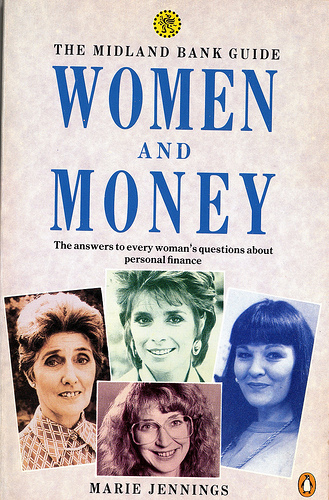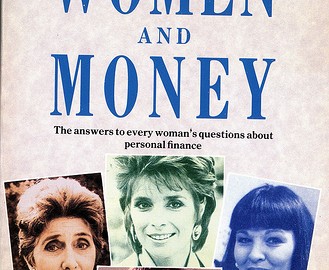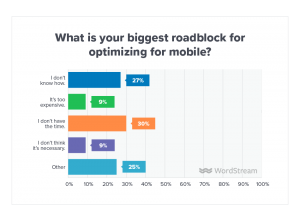Front cover of ‘Women and Money’ a publication to guide women through personal finance decisions and issues – 1980s

History of Women and Banking – 1907 until WWI
Posted on 06 Mar 2012
Midland’s (later HSBC plc) first woman recruit, Miss Anne Tulloch, joined the Bank at its Head Office in Threadneedle Street on 21 January 1907. Her duties were the translation of French and German newspapers for the Bank’s senior management. Miss Tulloch’s letter of appointment stated: ‘The hours would be from 10 till 4, and the salary to commence with would be £150 per annum’.[1] Further recruitment took place in about 1912 but these newcomers were primarily shorthand typists at Midland’s headquarters. In the main they worked for the Branch Superintendents, but two – Misses Taylor and Farbrother – were employed as typists for the (male) private secretary to Sir Edward Holden, then Chairman and Managing Director of the Bank. They led a somewhat cloistered life as they were forbidden to mix with the men. As to general bank duties, two or three ladies were employed in the early part of 1914, but these were very few indeed at a time when the total staff of the Bank numbered over 5,000.

After the outbreak of the First World War in August 1914, the rate of recruitment of women into Midland Bank greatly increased. These women were recruited as a temporary measure to replace members of staff who had joined the armed forces.[2] A guarantee was given to the men, by the Bank, that their jobs would be ‘kept open’ and supplements were paid to their service pay to keep their total income at bank salary levels. With the influx of temporary women, Miss Anne Tulloch, the Bank’s ‘first lady’, was appointed Lady Superintendent with responsibility for the recruitment and welfare of lady staff. Miss Tulloch subjected the women recruits to a thorough test before employment was offered; successful candidates were offered wages of approximately £1 per week rising by two shillings and sixpence in the second year. By 1915 Midland Bank was employing about 350 women clerks, whose duties included key-holding, counter service and other clerical duties both at Head Office and in the branches.
In the meantime the banking community was debating the possibility of women becoming a permanent feature of the banking world. The Bankers Magazine of 1915 argued that:
“It is probably impossible to employ as a general rule a proportion of ladies on the bank counter. It is probably impossible to employ them on heavy tills, or in offices subject to periodical rushes, where the physical and nerve strain would be beyond the endurance of a normal woman. Whether ladies will ever be considered eligible for the higher posts is, for the time being, a question too revolutionary for present consideration, but there is little doubt that as bank clerks many of them have come to stay, and it is necessary to an adequate conception of staff problems of the future that this fact should receive general recognition.”
At Midland, recruitment of women employees increased during the war years to over 1,000 in 1916, about 2,600 in 1917 and about 3,600 (equivalent to one third of the total number of staff) by the end of the war in 1918. Sir Edward Holden in his speech to the Annual General Meeting of 1916 confirmed that “… these young ladies are doing their work exceedingly well”. Meanwhile in 1917 – probably to the delight of women bankers – the Council of the Institute of Bankers ‘…decided as a provisional measure, to admit to the Institute’s examinations in April next, women clerks employed by banks on the Council’s list, and to issue certificates to successful candidates…’. They were not at that stage admitted to the membership of the Institute of Bankers. However in March 1919 this anomaly was removed when women were permitted to apply for full membership of the Institute.
After the armistice in 1918, the Bank remained pledged to provide jobs for those men returning from the armed forces. At the same time the appalling level of casualties during the war meant that there would be vacancies for those lady clerks who had been efficient during their time with the Bank and were willing to continue their employment.
HSBC Archives
Also in the History of Women and Banking series:
1990s until 2012
Equal opportunities in the 1970s
1945 until 1960s
Attitudes to Equal Pay
1918 until 1939
1907 until WW1
See the history for yourself – photos and artefacts
More information:
[1] http://www.nationalarchives.gov.uk/currency/default2.asp – This is a currency converter that allows people to see what £150 in 1907 would buy
[2] http://www.bbc.co.uk/history/british/britain_wwone/women_employment_01.shtml
More information: www.newsroom.hsbc.co.uk/articles/history_of_women_and_ban…
(1277)









